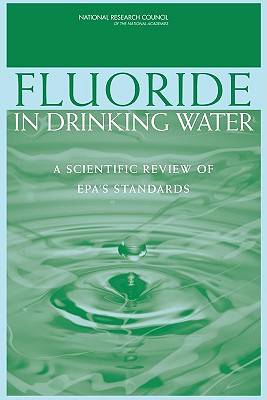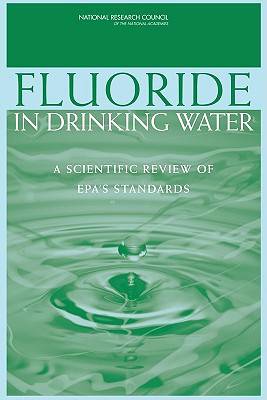
Je cadeautjes zeker op tijd in huis hebben voor de feestdagen? Kom langs in onze winkels en vind het perfecte geschenk!
- Afhalen na 1 uur in een winkel met voorraad
- Gratis thuislevering in België vanaf € 30
- Ruim aanbod met 7 miljoen producten
Je cadeautjes zeker op tijd in huis hebben voor de feestdagen? Kom langs in onze winkels en vind het perfecte geschenk!
- Afhalen na 1 uur in een winkel met voorraad
- Gratis thuislevering in België vanaf € 30
- Ruim aanbod met 7 miljoen producten
Zoeken
Fluoride in Drinking Water
A Scientific Review of Epa's Standards
National Research Council, Division on Earth and Life Studies, Board on Environmental Studies and Toxicology, Committee on Fluoride in Drinking Water
Paperback | Engels
€ 112,95
+ 225 punten
Omschrijving
Most people associate fluoride with the practice of intentionally adding fluoride to public drinking water supplies for the prevention of tooth decay. However, fluoride can also enter public water systems from natural sources, including runoff from the weathering of fluoride-containing rocks and soils and leaching from soil into groundwater. Fluoride pollution from various industrial emissions can also contaminate water supplies. In a few areas of the United States fluoride concentrations in water are much higher than normal, mostly from natural sources. Fluoride is one of the drinking water contaminants regulated by the U.S. Environmental Protection Agency (EPA) because it can occur at these toxic levels. In 1986, the EPA established a maximum allowable concentration for fluoride in drinking water of 4 milligrams per liter, a guideline designed to prevent the public from being exposed to harmful levels of fluoride. Fluoride in Drinking Water reviews research on various health effects from exposure to fluoride, including studies conducted in the last 10 years.
Specificaties
Betrokkenen
- Auteur(s):
- Uitgeverij:
Inhoud
- Aantal bladzijden:
- 530
- Taal:
- Engels
Eigenschappen
- Productcode (EAN):
- 9780309101288
- Verschijningsdatum:
- 22/01/2007
- Uitvoering:
- Paperback
- Formaat:
- Trade paperback (VS)
- Afmetingen:
- 182 mm x 227 mm
- Gewicht:
- 1061 g

Alleen bij Standaard Boekhandel
+ 225 punten op je klantenkaart van Standaard Boekhandel
Beoordelingen
We publiceren alleen reviews die voldoen aan de voorwaarden voor reviews. Bekijk onze voorwaarden voor reviews.









